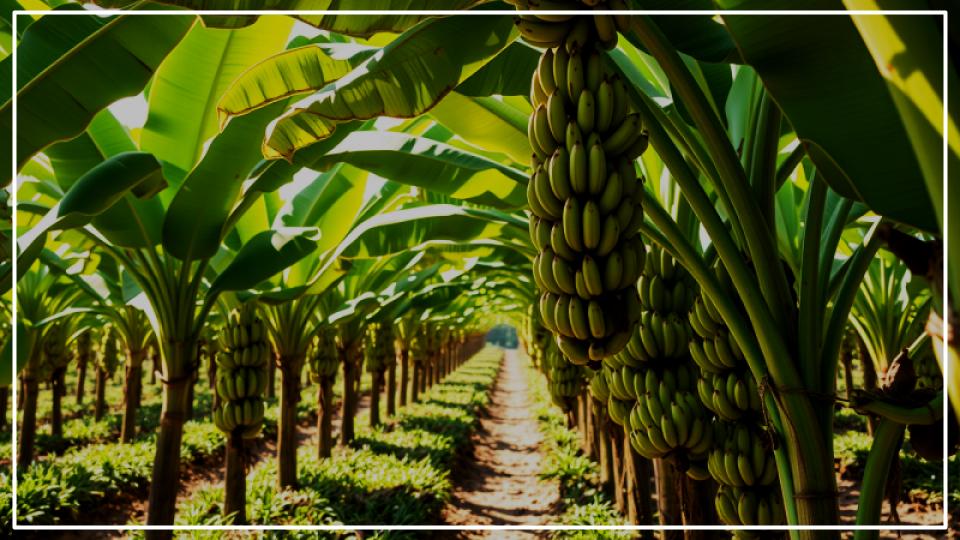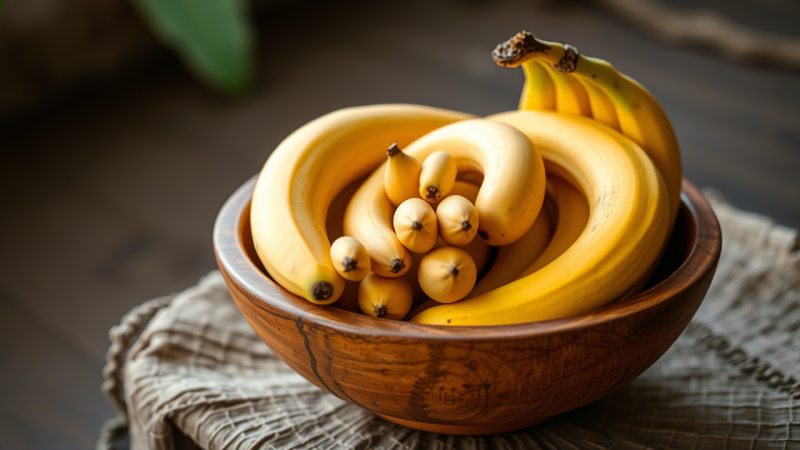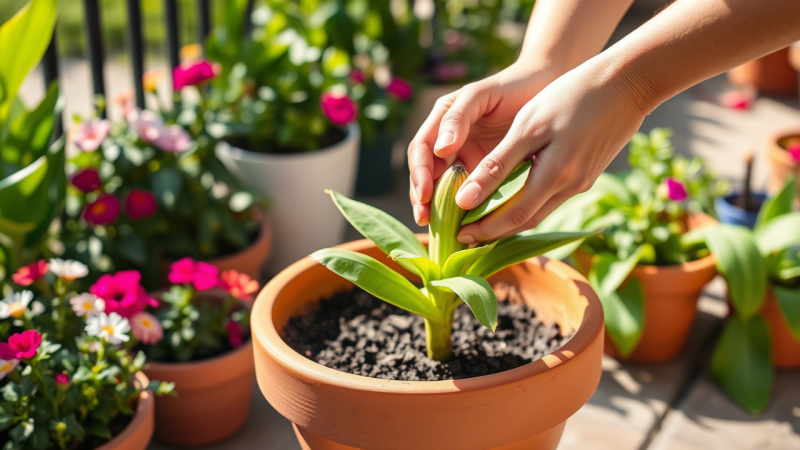When you picture a banana, you might imagine a sun-drenched plantation in Latin America. While that region is a powerhouse for exports, the answer to which country famous for producing the most bananas might surprise you. It’s not Ecuador or Costa Rica, but India. This vibrant nation, with its diverse climates and deep cultural appreciation for the fruit, grows nearly a third of all bananas worldwide—a staggering 33 million metric tons annually.

However, here’s a fascinating twist: despite its massive production, India consumes most of its own harvest. The banana is woven into the very fabric of Indian life, cherished not just as a staple food but also in traditional medicine and sacred rituals. This incredible domestic demand means that while India leads in production, it’s the nation of Ecuador that holds the title of the world’s largest exporter, shipping the beloved Cavendish variety to breakfast tables across the globe.
Your Path to Banana-Growing Success
Here’s what you need to know to get started with these rewarding plants:
- Choose Wisely: Select a banana variety that suits your climate and space. Dwarf varieties are perfect for containers.
- Sun and Rich Soil: Provide at least six hours of direct sunlight and plant in well-draining, compost-rich soil.
- Water and Feed Generously: Bananas are thirsty and hungry plants. Keep the soil consistently moist and fertilize regularly during the growing season with a potassium-rich formula.
- Embrace the Tropics: Their large, vibrant leaves can transform a patio or garden corner into a lush, tropical retreat.
The Heart of Production: Why India Reigns Supreme
India’s position as the top banana producer isn’t accidental. It’s a combination of ideal growing conditions, a rich diversity of varieties, and incredible cultural importance. The country’s varied agro-climatic zones, from the tropical south to the more temperate north, allow for year-round cultivation.
I’ve always been fascinated by how different regions yield unique flavors. In India, this is especially true for bananas. You’ll find a much wider array of cultivars than you’d ever see in a Western supermarket, each with a specific use and taste profile.
A Tour of India’s Favorite Banana Varieties
While the world market is dominated by the Cavendish banana, India’s domestic market is a tapestry of flavors and textures. Here are a few noteworthy varieties:
- Musa ‘Rasthali’: A true delicacy. These medium-sized bananas have a thinner, pale yellow skin and an exceptionally sweet, almost tangy flavor with a delightful, creamy texture. They are highly prized for their unique aroma.
- Musa ‘Poovan’: One of the most common and beloved varieties in South India. These small, slender bananas have a bright yellow, thin peel. Their flavor is a pleasant mix of sweet and sub-acid, making them incredibly refreshing.
- Musa ‘Nendran’: Often referred to as the “king of bananas” in Kerala, this is a larger, more angular variety. It’s incredibly versatile—eaten ripe, it has a firm texture and a satisfying, mild sweetness. When green, it’s used for cooking, much like a plantain, and famously made into popular banana chips.
- Musa ‘Grand Naine’: A relative of the Cavendish, this variety is a commercial favorite due to its high yield and resilience. This is the classic “supermarket” banana, with a reliable sweetness and smooth texture.

Bringing the Tropics Home: A Guide to Growing Your Own Banana Plant
There’s something wonderfully dramatic about a banana plant. With their enormous, paddle-like leaves, they can instantly create a lush, resort-like feel in any space. And yes, you can absolutely grow them at home, even in cooler climates. A common mistake I see is gardeners underestimating their need for food and water, but get that right, and you’ll be rewarded with spectacular growth.
Choosing Your Perfect Plant
For home gardeners, especially those with limited space or in zones with cold winters, selecting the right variety is key. The ‘Dwarf Cavendish’ is an excellent choice, as it stays a manageable 8-10 feet tall and can be grown in a large container. If you’re looking for something truly ornamental, the Red Abyssinian banana (Ensete ventricosum ‘Maurelii’) offers stunning, deep-red and green foliage, though it doesn’t produce edible fruit.
Planting and Soil: The Foundation of Success
Banana plants are heavy feeders and thrive in rich, fertile, and well-draining soil.
- Location, Location, Location: Find a spot that receives at least six to eight hours of direct sunlight. If you’re in a particularly hot climate, a little afternoon shade can prevent leaf scorch.
- Soil Preparation: If planting in the ground, amend the soil generously with compost and well-rotted manure. For containers, use a high-quality potting mix and a pot that is at least 18-24 inches in diameter with excellent drainage holes. In my own garden, I like to add a bit of perlite to the mix to ensure it never gets waterlogged.
- Planting the Pup: Banana plants are typically grown from “pups” or suckers. Plant the pup so that the soil level is the same as it was in its original pot, and water it in thoroughly to settle the soil.

Essential Care for Lush Growth
With banana plants, consistency is everything. They will reward your attention with vigorous, almost daily, visible growth.
- Watering: They are incredibly thirsty plants. Keep the soil consistently moist but never soggy, which can lead to root rot. In the heat of summer, you may need to water daily, especially for potted plants. A moisture meter can be a gardener’s best friend here.
- Fertilizing: During the spring and summer growing season, feed your banana plant every 2-4 weeks. A balanced liquid fertilizer is a good start, but once the plant is established, switching to a high-potassium formula will encourage better health and potential fruiting. According to the University of Florida IFAS Extension, potassium is crucial for banana development.
- Humidity: These plants love humid air. If you’re growing one indoors, grouping it with other plants or using a room humidifier can make a world of difference.
- Winter Care: Banana plants are not frost-tolerant. If you live in a region colder than USDA Zone 9, you’ll need to bring your potted plant indoors for the winter. Reduce watering and stop fertilizing until spring.
Styling with Banana Plants: Creating a Garden Oasis
Beyond the thrill of a potential harvest, banana plants are a designer’s dream for creating bold, tropical statements.
- Container Statements: A single, large banana plant in a beautiful ceramic or terracotta pot can serve as a stunning focal point on a deck, patio, or balcony. It instantly defines a space and adds a vertical element. As noted in Homes & Gardens, lifestyle expert Martha Stewart uses large potted plants like palms and agaves around her pool to create a lush, tropical ambiance with minimal maintenance.
- Lush Backdrops: Plant a grouping of banana plants along a fence or wall to create a living screen of green. Their large leaves provide wonderful texture and can help obscure an unsightly view, transforming it into a verdant backdrop.
- Poolside Panache: Nothing says “tropical getaway” quite like banana leaves swaying by the water. They are perfect for poolside plantings but be sure to plant them where falling leaves won’t clog filters.
A Fruitful Endeavor
From the vast plantations that make India the country famous for producing the most bananas to a single, dramatic specimen on your patio, the banana plant offers a unique connection to the tropical world. It’s a plant that performs, offering both bold beauty and, with a little care, the sweet reward of a homegrown harvest. It teaches us about the importance of consistent care and rewards us with a vibrant, living sculpture that changes almost daily. Now that you’re armed with the knowledge of the experts, you are ready to embark on your own banana-growing journey.
Read More
8 Plants That Will Ruin Your Lemon Tree’s Health—Avoid This Costly Error
